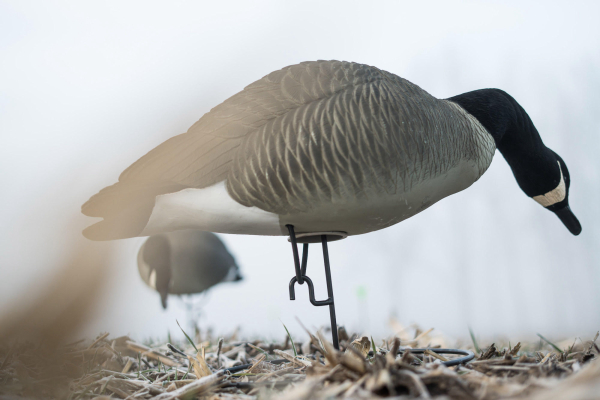Appreciating Your Neighborhood Canada Geese

DNR offers tips for avoiding problems with beautiful but plentiful birdsPerhaps one of the most recognizable birds in Michigan is the large, regal-looking Canada goose. Once a rare sight in Michigan, Canada geese now are very plentiful in the state – so plentiful that some people tend to think of them as pests. The Department of Natural Resources reminds Michigan residents that, with a little patience, understanding and perseverance, homeowners can learn to respect and appreciate these beautiful birds.
The subspecies of goose that is most plentiful in Michigan is the giant Canada goose. Because they are so abundant, many would never suspect that the giant Canada goose subspecies nearly was extinct in the 1950s because of unregulated overhunting and wetland habitat loss.
In recent years, the giant Canada goose has experienced population explosions in areas throughout North America due, in part, to the success of wildlife management programs and the adaptability of these birds. In Michigan today, the number of giant Canada geese counted each spring is well over 300,000. They nest in every Michigan county, but are most common in the southern third of the state, where 78 percent of the goose population is found.
Geese are herbivores and prefer grass shoots, aquatic vegetation, seed heads and various grains. Adult Canada geese have very few predators.
“In general, geese have benefited from the way humans have altered the landscape,” said Holly Vaughn, DNR wildlife communications coordinator. “Canada geese are attracted to areas that provide food, water and protection. Urban and suburban areas with lakes and ponds and neatly manicured lawns offer all the resources that geese need to survive.
“During the summer months, Canada geese can be a problem for some property owners, as they are very adaptable creatures and can live close to humans.”
These simple tips can help keep geese away from your yard:
• Make your yard less attractive to geese by allowing the grass to grow long and refrain from fertilizing or watering it.
• Use scare tactics like bird-scare balloons, loud noises and mylar tape to make unwanted geese leave the area.
• Apply repellents to the lawn to deter geese from feeding on the grass. Grape concentrate is useful for yards and turf.
• In June and July, Canada geese are unable to fly because they are molting. Construct a temporary barrier between your yard and the water to keep flightless geese out.
• Do not feed Canada geese. Artificial feeding can habituate them as well as harm their digestive system. Bread products are not beneficial to waterfowl survival.
• Be aware of your surroundings when visiting parks and areas near water. Canada geese are protective of their nests and hatchlings. Do not disturb them or get too close.
Vaughn said that the key to success is using a variety of techniques to keep the geese guessing, as they will get accustomed to just one scare tactic. Some sites have good luck with hiring a contractor that specializes in goose control, including using dogs to scare birds away when they first arrive in the spring. If multiple techniques have been tried and have been unsuccessful, the DNR offers a Resident Canada Goose Program that can permit nest and egg destruction and roundup and relocation by a licensed contractor in some areas of the state.
Goose hunting in Michigan helps to keep goose populations in check. Michigan regularly ranks in the top three states in the nation for Canada goose hunters and harvest. The plentiful geese provide excellent opportunities for goose hunters. To learn more about goose hunting, visit michigan.gov/waterfowl.
Contact: Holly Vaughn, vaughnh@michigan.gov, 313-396-6863






